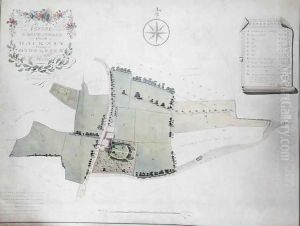William Hurst Ashpitel Paintings
William Hurst Ashpitel, born in 1807, was a notable English architect whose contributions to the architectural landscape of the 19th century remain significant albeit less celebrated than some of his contemporaries. Ashpitel was deeply influenced by his father, John Buonarotti Ashpitel, also an architect, under whose guidance he first embarked on his architectural journey. This early exposure to architecture, combined with his formal education, laid the foundation for a career that would see him engage in a variety of projects, ranging from church restorations to designing public buildings.
Ashpitel's architectural style was characterized by a blend of neoclassical and Gothic revival elements, a reflection of the eclectic tastes that marked the Victorian era. He was adept at navigating the architectural preferences of his time, integrating modern needs with historical aesthetics. One of his most recognized works is the Arthur's Club in London, a testament to his skill in designing structures that were both functional and stylistically resonant with the period's architectural ethos.
Beyond his architectural practice, Ashpitel contributed to the wider field through his writings and involvement in professional societies. He was a member of the Royal Institute of British Architects (RIBA) and engaged in the architectural discourse of his time, advocating for the preservation of historical buildings while also embracing the technological advancements of the 19th century.
William Hurst Ashpitel's career came to a close upon his death in 1869. Although he may not be as widely known as some of his peers, his work has endured, offering insights into the architectural innovations and debates of Victorian England. His legacy is preserved not only in the buildings he designed but also in his contributions to the architectural profession and its evolving dialogue between the past and the future.
